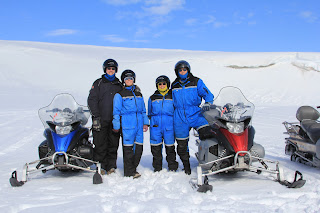How to describe Reykjavik? European. Modern. Capital. Friendly. Small-town feel. Young. Fit. Casual. Accepting.
 |
| Down at the harbor |
There are numerous words that could be used to describe Reykjavik, or for any city in the world I suppose. There are the straight-forward factual statements like "Reykjavik is the northern-most capital in the world," which it is, but that doesn't really say much. Then there are words like those I listed above. All of these are great descriptors, but they only describe one small aspect of the City. Yet they don't really capture the totality of Reykjavik.
What is one word I would use to describe Reykjavik? Fresh.
 |
Part of Reykjavik as seen from
the Pearl. |
Fresh Air, Fresh Food, Fresh Faces, Fresh Architecture, Fresh Perspective. For those who have been to Europe, you can definitely feel and see the European influence -- in the clothes, in the architecture, a little more formal but warm and inviting. The food has been fantastic and it is extremely fresh. Iceland grows a lot of vegetables and other foods in greenhouses, and we were very impressed with the selection and presentation.
As with most of Europe, there is excellent public transportation and we could take the bus to all the places we needed to go. Walking and biking trails are everywhere, and Icelanders are out at all times of the day running or biking. Even though it's cold outside, parents are strolling with their small children and pushing baby carriages with their infants all bundled up. You don't see plus-sized clothes in the stores because everyone here is very fit. There are lots of young people in Reykjavik which seems to contribute to its vibrancy.
 |
| Hallgrimskirkja |
There have been people in Iceland for over a thousand years, but there isn't the typical grand old architecture from the Renaissance that you find in other European capitals like London, Paris, or Rome. You see much more modern lines and styles with many of the buildings in Reykjavik.
The people we've encountered have been extremely friendly and very welcoming. English is spoken by most, so the language barrier is minimal. They are also very accepting of others unlike some other places we've visited.
So many different descriptors come to mind in trying to capture the essence of Reykjavik and our visit here, but to sum up our visit in one word, I'd have to say reFRESHing.
 |
Old Town Reykjavik as seen across the
pond from City Hall. |






















